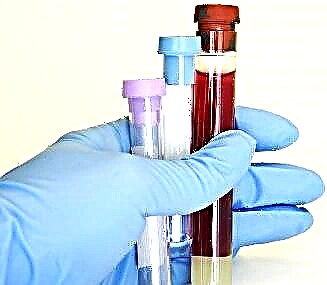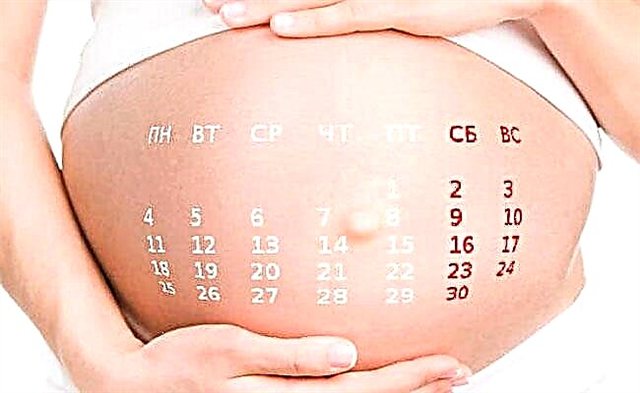Fever in a baby usually indicates the presence of an inflammatory process in the body. In some cases, mothers notice cold feet at a temperature in a child, and this worries them. There will be a conversation about how serious this problem is, why it occurs.

The baby got sick
What is temperature
The state of the body is judged by a set of indicators, among which a thermal biomarker is distinguished. In a normal state, the body temperature is maintained within certain limits; this indicator is not affected by the parameters of the external environment. Thermoregulation is responsible for the stability of the biomarker.
Slight fluctuations in body temperature throughout the day are allowed. Physiological deviations are insignificant and amount to about 0.5-1 °. The “fault” is natural biorhythms, subordinate to the daily solar cycle. If you draw up a graph of fluctuations, then the drop in temperature will be at 5 am, and the increase in the evening.
The hypothalamus and thyroid gland are responsible for temperature regulation. Violation of the relationship of these organs leads to deviations in indicators, both in one direction and the other. The reasons for this may be not only serious illnesses, but also common colds, as well as fears, stress, mental work, etc.

How to measure temperature
Even a slight deviation of the indicators by several degrees leads to a malfunction in the vital processes of the body. This causes it to overheat or hypothermia.
What body temperature is considered elevated
The marker with which the individual indicator is compared is considered to be a parameter of 36.5 ° C. In healthy children, it may differ slightly within 0.2-0.3 °. As for newborns, their body temperature is slightly increased, this is considered normal. The entire gradation of indicators is represented by the following data:
- subfebrile - 37-38 °;
- moderately high - 38-39 °;
- high - 39-40 °;
- dangerous - 40-40.5 °.
A moderately high temperature may not always mean that a serious illness is present. Here, you need to take into account the general condition of the toddler and the presence of signs confirming the problem.
Important! An indicator above 39.1 ° is called hyperthermic, it is a cause for concern, regardless of how the baby tolerates an increase in temperature.
Why are cold extremities at a temperature
Significant deviations from the norm are classified as a febrile condition. In fact, this is a natural protective and adaptive reaction of the body to various pathogenic stimuli. It is based on automatic restructuring of thermoregulation processes, which leads to an increase in thermometer performance.
Usually, all parts of the body heat up in the crumbs. Sometimes a situation arises when the child has cold extremities at a temperature. An increase in the parameter above 38 ° leads to a spasm of the blood vessels. As a result, blood circulation slows down, and a small amount of it enters the limbs.

The baby has cold feet
This phenomenon indicates that the body has malfunctioned in the processes of sweating, and the internal mechanism can no longer regulate heat exchange. Such a situation is especially dangerous for a baby in the first months of life - he has not yet fully formed important systems.
Interesting. Most often, ice extremities at high temperatures are a symptom of a viral disease (ARVI, influenza, whooping cough, mumps), as well as disorders of metabolic and endocrine processes, allergies. Sometimes the phenomenon is caused by incorrect therapy, undertaken by parents without consulting a doctor.
The main signs of white fever
Hyperthermic syndrome is a pathological variant of a febrile condition that leads to dysfunction of vital systems and organs. It manifests itself as a consequence of a neglected situation.
Depending on what became the main cause of the phenomenon, fever is divided into 2 types. In babies, "red" hyperthermia is more common, which is characterized by the corresponding color of the skin, moist, hot to the touch limbs, and rapid breathing. The prognosis for this type of fever is favorable, since heat production in the body corresponds to heat transfer.
Despite the increase in temperature to febrile values, "red" hyperthermia does not affect the child's behavior. "White" fever should be a concern for mom.
Dangerous symptoms
High fever and cold extremities in a child are the main signs of white fever. The phenomenon got its name due to the "white spot" symptom that occurs at the place of finger pressure on the dermis. Other "landmarks" should be highlighted:
- marbled pale dry skin;
- bluish tint to lips and nail beds;
- failure of breathing;
- chills;
- convulsive state with trembling of arms and legs.

White fever
The behavior of the baby is also violated - he becomes lethargic, indifferent to everything, practically does not eat anything and does not sleep well.
Why is fever dangerous?
Hyperthermia, on the one hand, is considered a beneficial phenomenon, confirming the good functioning of the immune system. The defense mechanism makes adjustments to physiological processes by redirecting blood flow to vital organs. In case of "white" fever, the legs of the toddler first of all suffer, which do not receive their portion of lymphatic fluid.
Despite the fact that an increase in temperature creates unfavorable conditions for pathogenic organisms, in some cases, fever harms the child, especially if the disease is provoked by a virus. In this case, pathogens multiply inside the cells. By acting on the pathogen, the defense system also kills the infected cell - it and the virus have the same protein clotting temperature.
Another danger of "white" fever is the violation of the interaction of the 2 components of thermoregulation (production and return). Therefore, antipyretic drugs by themselves do not always work, which is why the baby's hydro-salt balance gets lost, and overheating of the body may occur.

Convulsive syndrome
As a result, the body produces toxins that affect the central nervous system. With a long-term high temperature, the child begins seizures, a delusional state and even death are possible.
Parents' actions when the temperature rises
The first steps of many mothers with a high thermometer is to immediately give the baby an antipyretic. Before doing this, you should find out why the crumbs have a fever, and also try to identify accompanying signs.
When to bring down body temperature
Doctors recommend not to lower the subfebrile temperature in order to allow the body to fight the disease. There is a nuance here: if with a "red" fever you can reach up to 38.5 °, then with a "white" fever you should not wait for mercury to crawl beyond the subfebrile line.
Regardless of the form of hyperthermia, antipyretic drugs are prescribed to children at risk if the thermometer reads above 37.5 °. This category includes:
- babies of the first months of life;
- suffering from febrile seizures;
- children with CNS pathology;
- having metabolic problems of a hereditary nature;
- who have chronic lung and heart diseases.
With home therapy, mom monitors the baby's temperature every 30-60 minutes. If the indicator has dropped to a safe parameter and is stably kept, the drug effect can be stopped and the immune system can be reduced to normal without additional intervention.
First aid
Having diagnosed the child with a high temperature and cold feet, the mother should immediately provide the baby with all possible help. Activities include the following:
- the introduction of an intramuscular lytic mixture containing an antipyretic agent ("Analgin"), a vasodilator ("No-shpu", "Papaverin" or "Dibazol");
- if the baby is over a year old, an additional antihistamine is given ("Diazolin", "Pipolfen", "Suprastin");
- rubbing the entire body (with gentle movements so as not to damage the skin) - this stimulates blood circulation;
- a warm heating pad (37 °) is applied to the feet.

How to bring down a fever
Injections can be replaced with tablets: "Analgin", "Ibufen" or "Paracetamol". A single dosage of medicines is selected taking into account the age of the baby.
To normalize the heat exchange, the crumbs should be warmed up by wrapping them in a blanket (provided that the indicator does not go off scale for 38.5 °). It is better to keep the temperature in the room between 18-20 °.
Additional measures
If the immune system "decides" to raise the body temperature by at least 1 °, the body will need an additional volume of fluid: 10 ml is needed for each kilogram of weight. Little ones can drink warm water, tea, milk. The best effect will give a decoction of raisins in combination with dried apricots and dried fruits.
It is advisable to keep on hand anal suppositories "Viburkol" (or similar). They not only have antipyretic and analgesic properties, but also have anti-inflammatory and sedative effects. The drug is good for cramps and helps neutralize toxins.
When to call an ambulance
If an antipyretic effect is not observed within half an hour, it is necessary to call a specialist at home or (if possible) take the baby to the hospital. The reason for going to an ambulance should be the following signs indicating the severity of the condition:
- whimpering and sobbing of the baby;
- weakened voice;
- dry mucous membranes of the mouth and eyes;
- the appearance of acrocyanosis and pallor;
- discoloration of the skin.

Time to call an ambulance
Council. Lethargy, weakened attention of the toddler, convulsive syndrome - all these are reasons for seeking medical help.
What will happen when the doctors arrive
The doctor who arrived in the ambulance first assesses the situation, talks to the mother to clarify the clinic of the problem. If a specialist detects a "red" fever that does not pose a threat to the baby's health, then, after providing the necessary assistance and giving the mother recommendations for care, he will leave, leaving the child at home.
When diagnosed with "white" hyperthermia, the baby will most likely be taken to the hospital. The reason for hospitalization will also be:
- the hoarse moaning voice of a baby;
- hysterical crying;
- if the child does not sleep at all or, on the contrary, does not wake up;
- when the baby is indifferent to the environment and does not respond to stimuli.
In special cases, the resuscitation of the baby begins on the way to the hospital - in the ambulance car.
What Dr. Komarovsky advises
Some mothers, having felt the hot forehead of the baby, immediately recall the recipes that grandmothers used to bring down the temperature, and begin to treat the child on their own. The authority of most women, Dr. Komarovsky, is categorically against such measures, because mothers usually try to wrap the baby in wet sheets or rub it with vinegar, alcohol-containing solutions.

Contraindicated in white fever
The first action will further disrupt thermoregulation. The second - will act as a vasoconstrictor and slow down blood flow to the extremities. Rubbing with vodka will provoke poisoning of the baby (by inhaling alcohol vapors or absorbing liquid through the skin).
Do not wipe your child with cool water. Its temperature should be only 1 ° lower than the body parameter. Otherwise, skin cooling will provoke peripheral vasospasm. This, in turn, will disrupt the body's ability to get rid of endogenous heat.
Another mistake of parents in this situation is to warm the baby as much as possible. In addition to being wrapped in blankets with his head, they also increase the temperature in the room by turning on the heater. In this case, the crumb will overheat even more, and the legs will remain cold. Dry air will also have a negative impact on the situation.
Recommendation. You should not immediately knock down the temperature at home if the child does not show alarming symptoms. It is necessary first to give the body an opportunity to show its own protective properties in the fight against inflammation.
Often, the main reason that a baby's feet get cold at elevated temperatures lies in the disease itself. Therefore, self-medication with "white" fever is undesirable - first of all, it is necessary to find the factor that provoked it.
In young children, the temperature can jump for any reason. The reason may be not only diseases, but also outdoor games, vigorous exercise, overheating in the sun, etc. Therefore, in most cases, toddlers easily tolerate a rise in temperature. If a child has symptoms of white fever, an immediate parental response and immediate medical attention is required.



